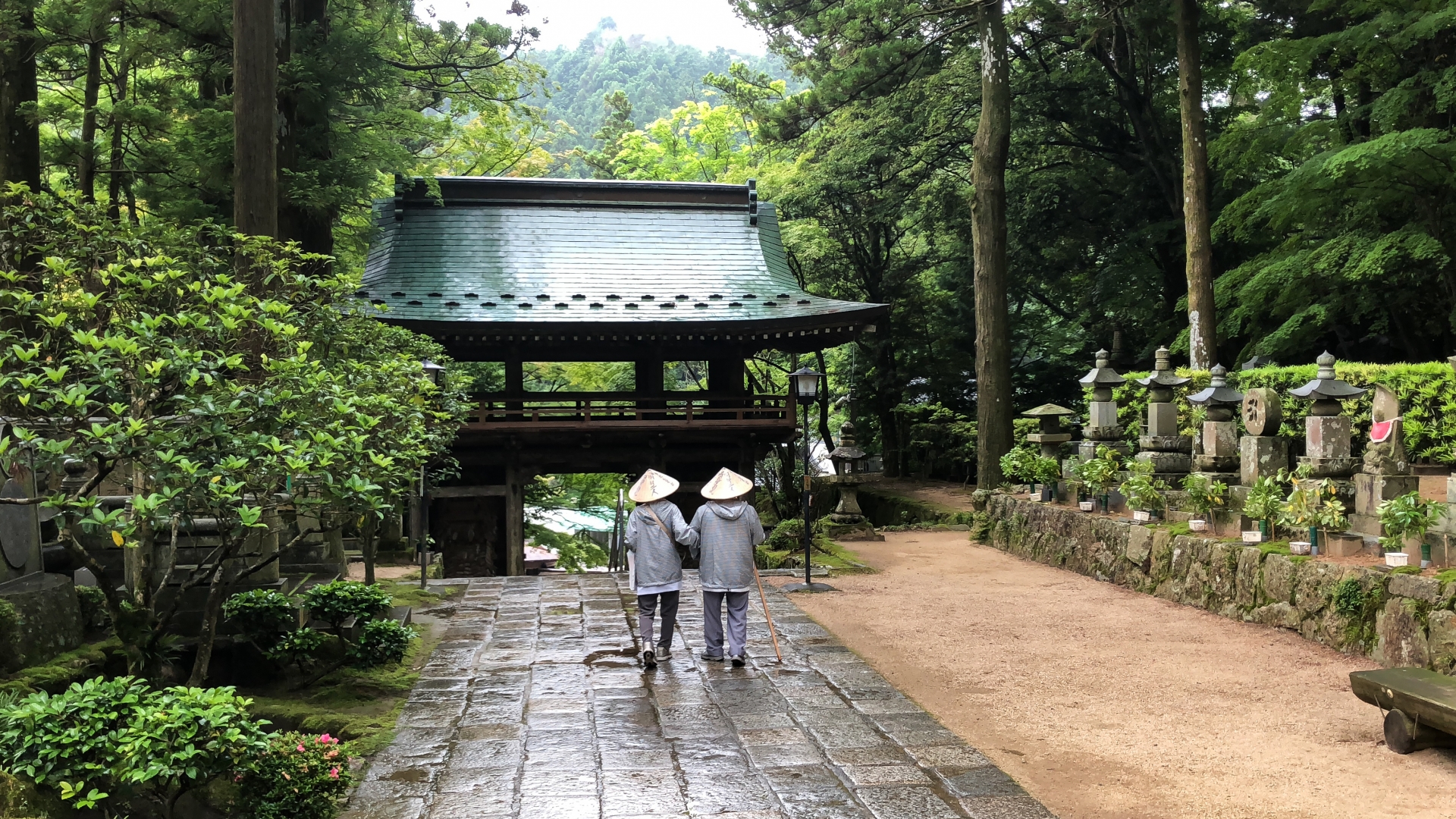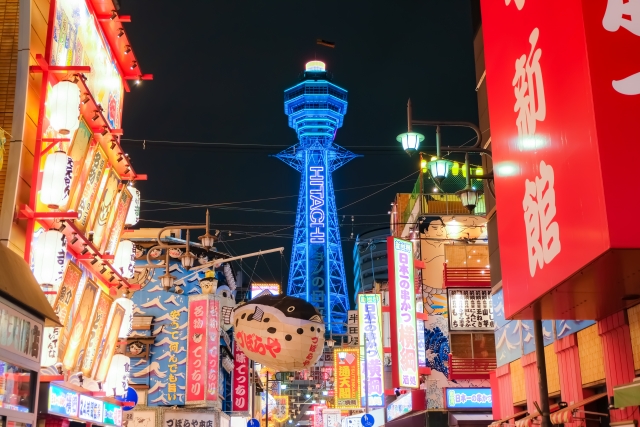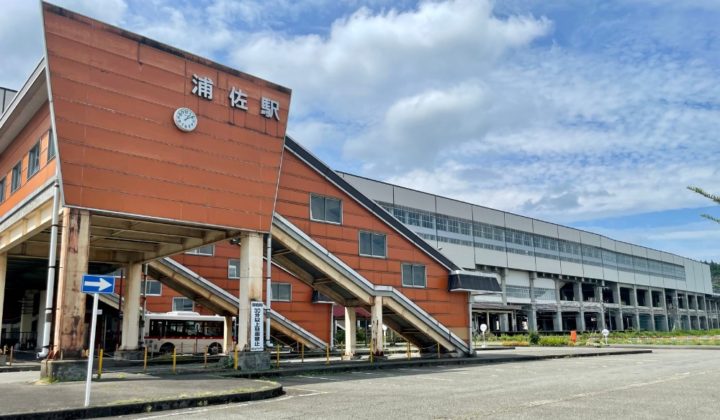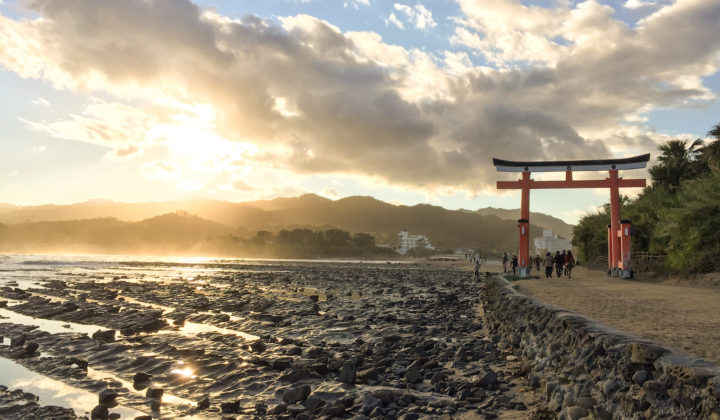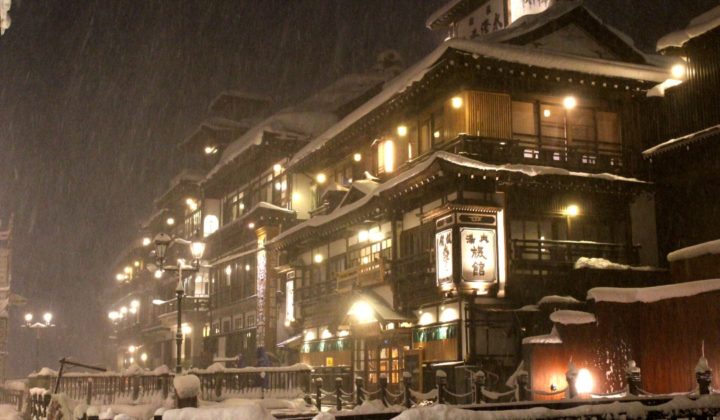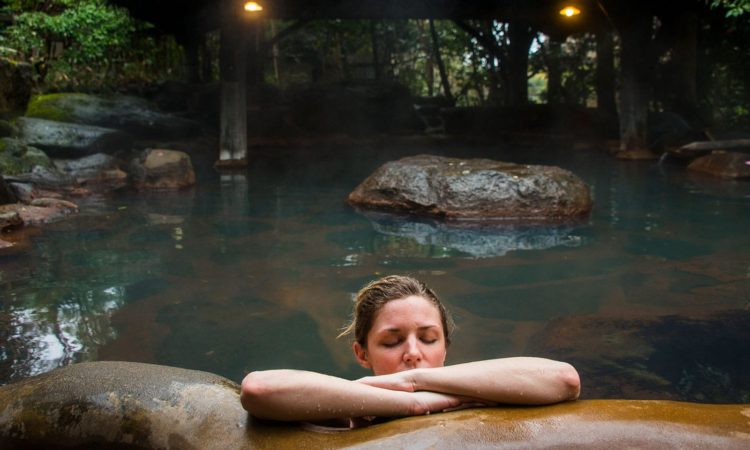On Shikoku Island in southern Japan, you can walk the Shikoku Pilgrimage, which extends over 1200 km and includes 88 temples. It is one of the few pilgrimage routes in Japan and of the few circular pilgrimages worldwide.
The History of Shikoku Pilgrimage and Kobo Daishi
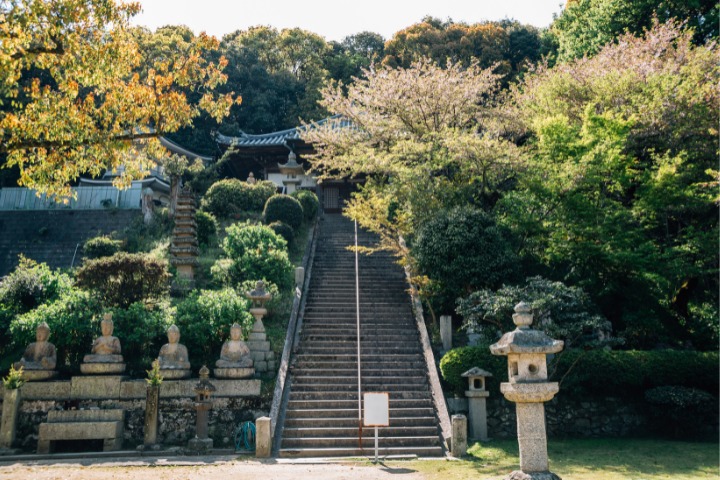
Image credits: Canva.com
The Shikoku Pilgrimage is closely connected to the Buddhist monk Kukai (posthumously named Kobo Daishi), who lived in the Heian period and is known as the founder of Shingon Buddhism.
The legend says that he first brought a statue of Buddha into the Ryozenji temple, the first temple of the 88.
Considered a deity by popular religion, the legend says he travels along with pilgrims helping them in times of trouble, represented in the concept of “dogyo ninin” (同行二人) “, two people, one practice.”
Who Are the Pilgrims?
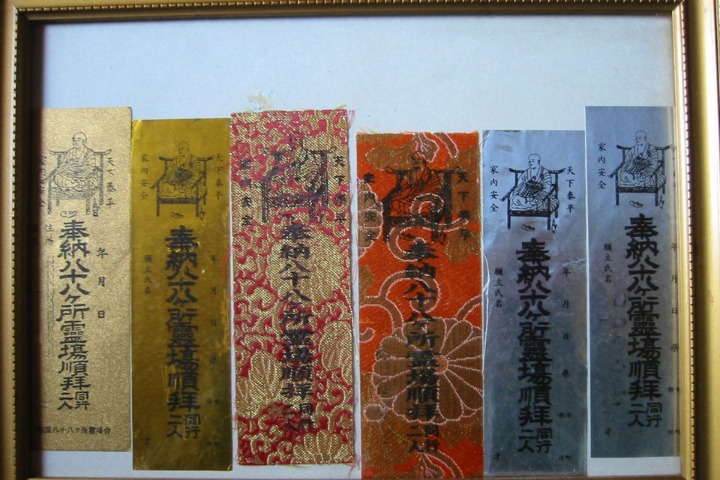
Image credit: Wikimedia
To differentiate themselves from ordinary people, the pilgrims wear particular clothes and carry with them the osamefuda and nōkyōchō.
Osamefuda is a sort of pilgrim’s ID, formerly made of stone or wood, with their name and address to make it easier for pilgrims to be found in case they were involved in an accident during the pilgrimage. Nowadays, they are made of paper with bear drawings or invocations to Kobo Daishi, as well as the pilgrim’s name, surname, address, and other details. Pilgrims leave them in special boxes found at each temple they visit.
Pilgrims collect red seals (nokyo) at each temple that are stamped on nokyocho, a special book that is stamped and calligraphed with the name of the temple and the main deity. The nokyocho is considered particularly important because they witness the completion of the entire pilgrimage.
The Different Ways to Travel the Shikoku Pilgrimage
There are different ways to travel the pilgrimage.
According to the traditional order, each temple corresponds to a number which sees the pilgrimage begin at Ryozenji Temple (temple 1), located in Tokushima Prefecture. It then continues clockwise to temple 88, Okuboji Temple, in Kagawa Prefecture. This way of traveling the pilgrimage is called jun-uchi, and it is easier to follow the path markers this way. Other people travel in reverse order, called gyaku-uchi, even though there isn’t a rule as to what order you should visit the temples.
Another method is called kugiri-uchi and consists in completing different sections of the pilgrimage at other moments. This is one of the most popular since not many people have the time and money to complete the pilgrimage all at once.
Walking is the traditional way of completing the pilgrimage: it allows you to meet other pilgrims easily and to connect with local people and the community, leading to a more profound journey. The sense of accomplishment that comes from overcoming the long and challenging walk is an irreplaceable experience.
But while the warmth of people and the beauty of nature surely make the journey more fulfilling, walking the pilgrimage is also a tough physical experience. The average is around 20km a day for 8/10 hours, and drafting up an unreasonable plan can, on the other hand, make it harder to continue.
In addition to walking, you can travel the Shikoku Henro by bicycle, car, motorcycle, public transportation, cab, organized tour bus, and lately, even by helicopter. More and more pilgrims are deciding to travel the Shikoku Henro using tour buses.
Bus companies organize different routes that allow people to visit some or all of the 88 pilgrimage temples under the guidance of a sendatsu.
Sendatsu is a term anciently associated with both ascetics and pilgrim guides. Today, the role of a sendatsu is to promote the pilgrimage, guide groups of pilgrims by telling them about the legends and traditions of the Shikoku pilgrimage and ensuring they walk it correctly. A Sendatsu is appointed based on the number of times they have walked the pilgrimage, respect gained through years of service, and recommendations from monks or other influential sendatsu in the Reijokai – the association that brings together all pilgrimage temples.
The Reijokai primarily promotes the pilgrimage, communicates and coordinates activities among the various temples, and improves infrastructure along the route.
Why You Should Travel the Shikoku Pilgrimage
In conclusion, the Shikoku Pilgrimage is an experience that goes beyond religion and has become an experience to seek oneself or reconnect with nature, a way to disconnect from daily life, or a simple tourist destination. And this is perhaps its main strength is adapting to any pilgrim’s needs while keeping its connection to tradition intact.
Would you walk the Shikoku Pilgrimage? Let us know!
Related articles:
- Tokushima Prefecture: Your Next Spring Trip Destination
- From History to Delicacies: Five Things to Do in Hiroshima
- 8 Important Cultural and Heritage Facts About Japan
Featured image credits: Photo-ac.com

